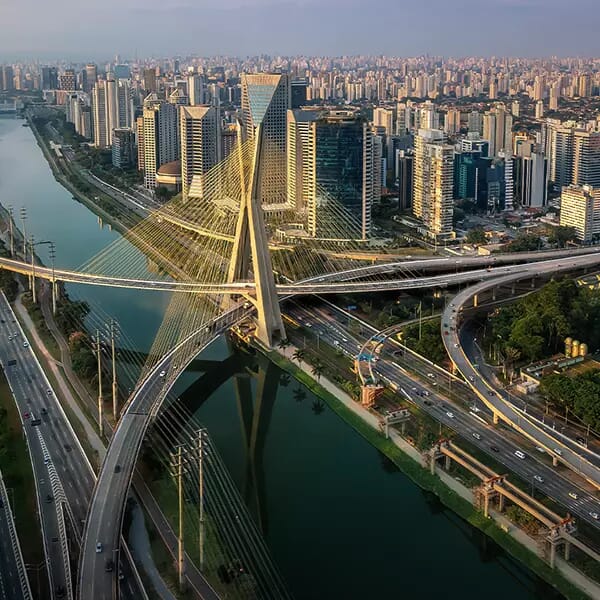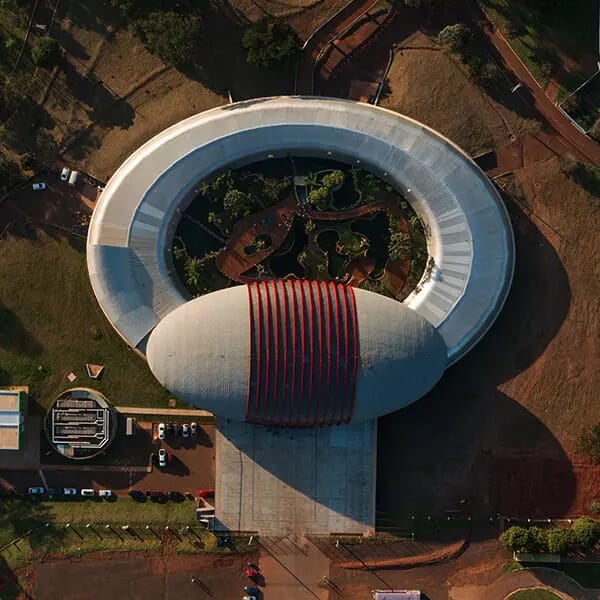 Credit: Leon-Overweel / Unsplash
Credit: Leon-Overweel / UnsplashBankability and Emerging Risks in Latin America
Stakeholders across the infrastructure spectrum saw the world change rapidly in 2020 as the COVID- 19 pandemic upended the global economy and forced changes in business models. The pandemic came as many companies were already re-evaluating their strategies and processes in response to environmental, social, and governance (ESG) issues, as well as ongoing technology changes.
Looking ahead, it is important to recognise the lessons learned over the last 12 months in anticipation of future crises.
 Credit: twenty20photos / Envato Elements
Credit: twenty20photos / Envato Elements
COVID-19 Lessons
Even before COVID-19, Latin America was experiencing rapid technological change, growing economic interdependence, and mounting political instability. For example, riots in Chile, a hard rainy season in the north of Peru, and shifts in governments in Mexico, Argentina, and Brazil changed the political environment significantly for private investors.
Looking back, it’s interesting to note that the Global Risks Report 2006 (by the World Economic Forum with input from Marsh) raised the issue of pandemics: A “lethal flu, its spread facilitated by global travel patterns and uncontained by insufficient warning mechanics, would present an acute threat.” A pandemic, the report said, would bring “severe impairment of travel, tourism and other service industries, as well as manufacturing and retail supply” while “global trade, investor risk appetites and consumption demand” could see longer-term harm. COVID-19 has certainly lived up to that scenario, and worse. Projects were suspended, supply chains heavily impacted, and contracts brought under scrutiny to determine who is responsible for the economic damage brought on by the pandemic.
Lenders, investors, government authorities, and contractors have had to contend with a risk of a magnitude seldom seen before. The lack of experience made it difficult for organizations to chart a path through the uncertainty.
The pandemic has highlighted the importance of scenario planning as a strategic planning tool. Scenario planning includes identifying forces that will shape future markets and operating conditions; exploring how those drivers may interact; and imagining a variety of plausible future outcomes. The models help to devise strategies that prepare organizations for emerging risks, which may feel remote, but would have a large impact on a project’s success.
 Credit: Tham KC / Envato Elements
Credit: Tham KC / Envato Elements
The Journey to Sustainability
Stakeholders across the infrastructure spectrum are adapting to and leading in ESG matters. For example, some in the financial sector are changing underwriting guidelines, government authorities are raising standards on project tenders, developers are looking for technology and operational efficiencies, and non-profit organisations are leading members through the changing environment.
The near-global lockdown raised the profile of climate change as the amount of carbon emissions released into the atmosphere fell. This augmented public awareness of, among other areas, the targets set in the European Green Deal and Paris Agreement.
At the same time, there is a realisation that the road is long, and that there are no magic bullets to achieve ESG goals. Current estimates put the price of achieving net-zero greenhouse emissions at 1% to 2% of world GDP 1 . It will take a variety of actions to achieve targets. Already, electric cars, renewable energy, 3D printing, building information modelling (BIM), and more are playing a role in the efficient use of resources and creating efficiencies within projects.
Extreme-weather Events
The frequency and severity of extreme weather events has increased over the last few decades. According to data from Munich RE, climate-related events increased by 2.7 times from 1980 to 2019 2 . Companies must think about the potential impacts on projects in coming years, including the challenge to price risk on projects when the lifespan may be more than a decade.
For example, a port operator and other infrastructure developers in coastal areas now must consider the effect of rising sea levels. Whether they are building new or own existing infrastructure, flood protection is required to meet future needs.
Scenario planning will also play a role in helping to adapt facilities to future events. Whether it is elevating equipment, creating flood barriers, or encasing power generators, scenario planning can help identify cost effective measures.
 Credit: MegiasD / Envato Elements
Credit: MegiasD / Envato Elements
Industrial Revolution 4.0
Industrial Revolution 4.0 is gathering momentum. Across Latin America, technology firms are building large data centres capable of supporting the demands of big industry for cloud services.
In many ways, the infrastructure is just now catching up to the transformative potential of emerging technology. Concepts such as BIM and 3D printing are becoming mainstream in large projects across the region. In 2018, for example, Metro de Bogota formally presented a project designed using BIM for the first time in the history of Colombian public entities.
BIM has the potential to create savings between 5% and 15% in the construction phase, and to integrate data between civil works, public utilities, structures, and topography to create a digital project model.
Technology also enables mega-projects to use resources more efficiently and more sustainably. Coordinating design, procurement, and construction will allow project managers to more accurately order materials and equipment, reducing waste and rework.

As infrastructure stakeholders recover from the global pandemic, they must also look ahead to risks related to ESG and the ongoing Industrial Revolution 4.0. Taken together, they will impact projects worldwide over the next decade and beyond. Firms that take advantage of such tools as scenario planning will be best positioned to successfully navigate the risks.
Marsh
We are experts in Risk Management, Insurance and Guarantee for Construction and Infrastructure projects, power generation, transmission lines and power distribution
Marsh is the world’s leading insurance broker and risk advisor. In more than 130 countries, our experts in every facet of risk and across industries help clients to anticipate, quantify, and more fully understand the range of risks they face. In today’s increasingly uncertain global business environment, Marsh helps clients to thrive and survive.
We work with clients of all sizes to define, design, and deliver innovative solutions to better quantify and manage risk. To every client interaction we bring an unmatched combination of deep intellectual capital, industry-specific expertise, global experience, and collaboration. We offer risk management, risk consulting, insurance broking, alternative risk financing, and insurance program management services to businesses, government entities, organizations, and individuals around the world.
Our Offices
Brasil - São Paulo
Rua Arquiteto Olavo Redig de Campos, 105 - Torre B - 28th Floor 28.22
São Paulo, SP – Brasil
Chile - Santiago
Los Militares 4611, piso 3
Las Condes, Santiago - Chile
Peru - Lima
Las Orquideas 675-San Isidro-Piso 12
Lima - Peru
Colombia: - Bogotá
Calle 72 No 10-07 Of. 1004
Bogotá - Colombia
Argentina - Buenos Aires
Asesores en Seguros, Florida 234 2/3
Buenos Aires – Argentina
Mexico - Ciudad de México
Paseo de la Reforma 505, Piso 14, Col. Cuauhtémoc
Ciudad de México - Mexico



